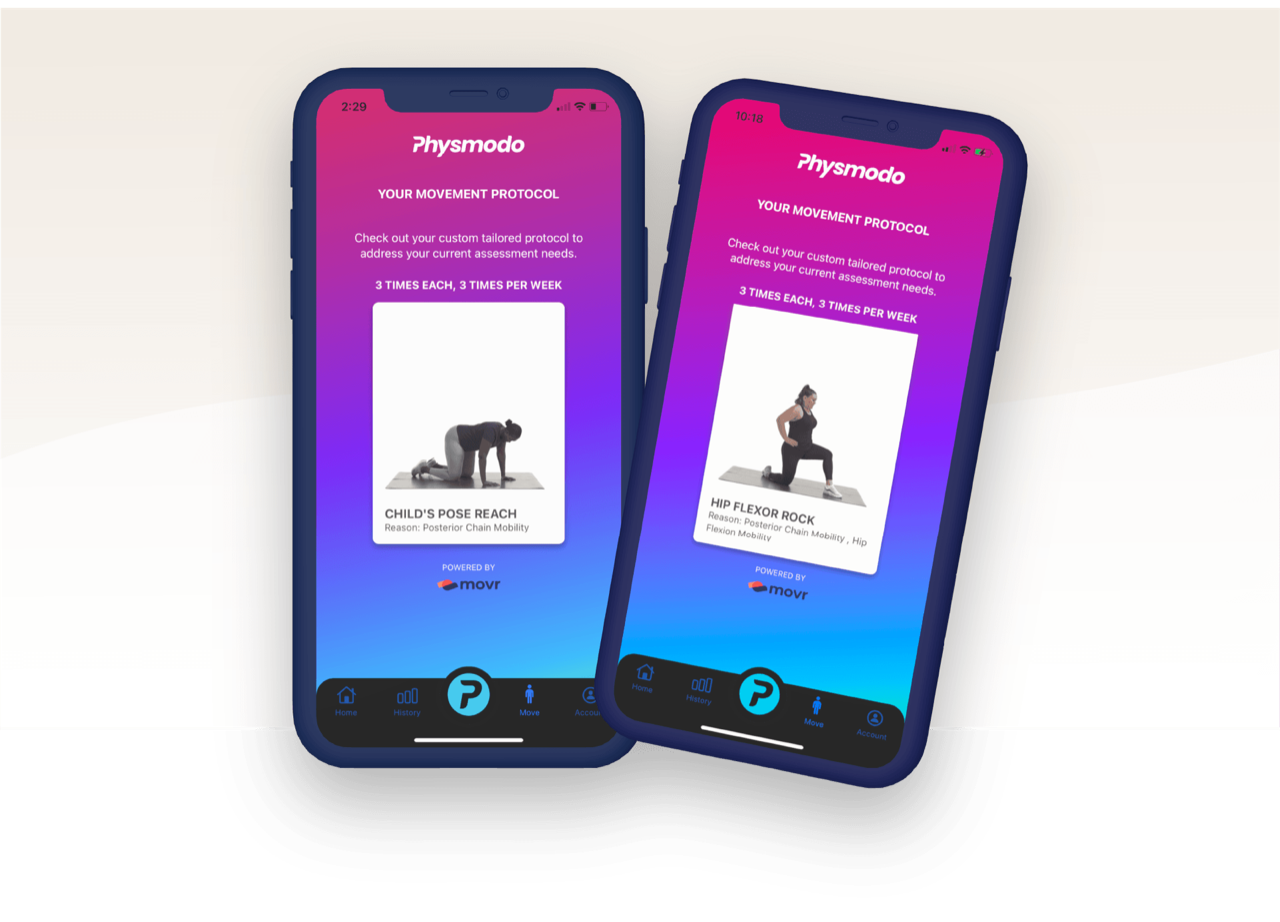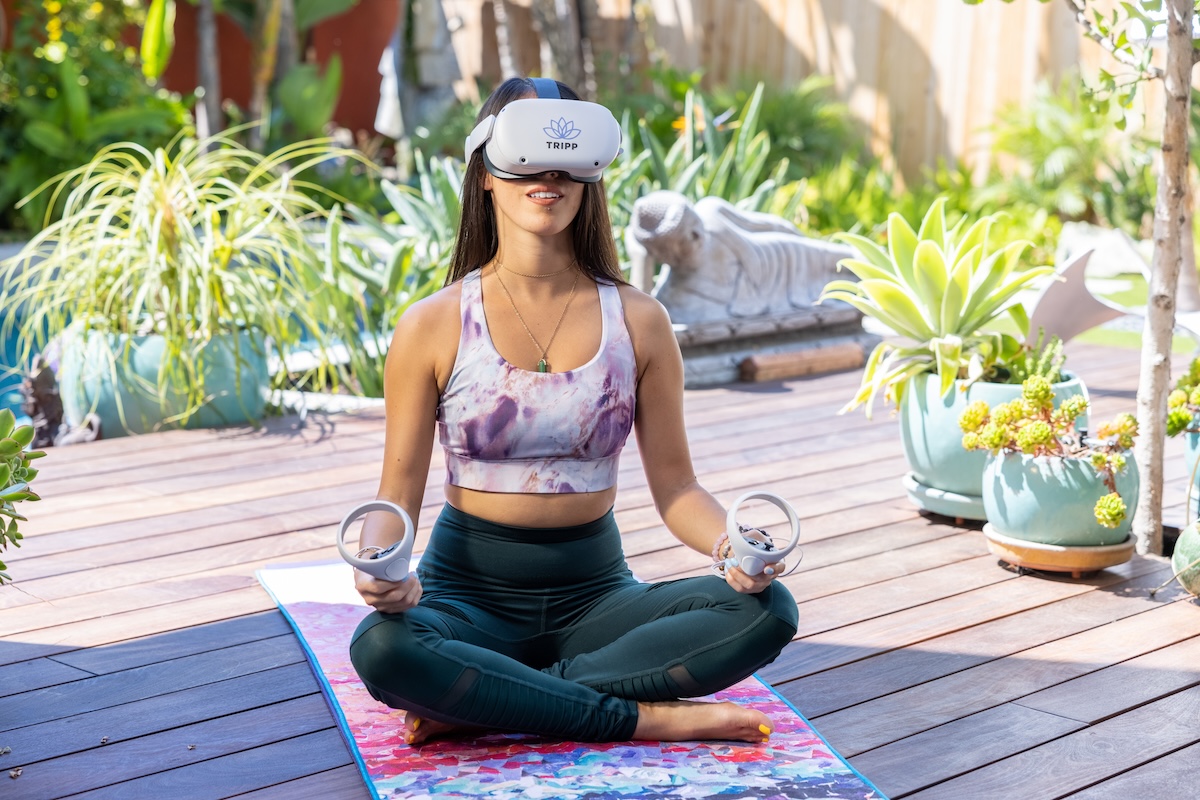In this Q&A, you’ll hear from Aaron de Jong, founder & CEO of movr, a consumer app and platform for movement health. Aaron discusses turning an in-gym functional movement screening into an algorithm and how other companies are using movr’s computer vision-assisted technology in their own products.
Can you tell us about what you’re working on at movr?
Aaron de Jong: movr provides movement-health-as-a-service. We bridge a massive gap in the current digital health market by providing personalized exercise recommendations for every person based on their actual physical needs.
On the surface, our method seems simple: We assess how the body is moving and use that information to provide appropriate exercise recommendations that improve both feel and function. We think it’s a no-brainer, but this approach still isn’t common in the digital health landscape.
We’re continuing to evolve by working with wearable tech and computer vision companies to develop new ways to capture movement information and translate it into meaningful, personalized exercise prescriptions at a scale — something not yet seen in the digital landscape.
MSK health is at a critical tipping point, telling us that what we’ve been doing to date hasn’t been working. The market is starting to seek solutions to help people move better instead of just moving more. We believe we’re the best-positioned plug-and-play service that provides Rx’d movement health on a personalized and scalable model across multiple categories.
How did you come up with the idea? What key insight led you to pursue this opportunity?
AdJ: I’ve spent 15 years as a personal trainer, big-box gym member, and boutique studio owner. In 2015, my studio in Vancouver [Movement108] was maxed out in terms of trainer and client capacity, and I was problem-solving how I could scale the experience we were providing.
At the studio, every client was assessed via the FMS (functional movement screen) system or during a curated warm-up session. We would tailor the entire session to address the specific needs of that person’s body while still working toward their sweat or strength goals.
With this approach, it became obvious pretty quickly that there wasn’t a one-size-fits-all solution for everyone. There were always subtle nuances to each person that required specific exercise recommendations to help them feel good and perform better. People were crushing goals and feeling great along the way—and the studio was doing really well from an economics perspective—so I saw there was an opportunity for something more.
I met my co-founder and CTO that same year, and we had this huge ‘aha!’ when he started doing some napkin math, showing how what we did in the studio was actually a logic system that he could code into algorithms.
We worked off the side of our desks for two years until we had built a system that could deliver unique exercise recommendations based on individual inputs.
How did you turn your idea into a company?
AdJ:We had this algorithm but no real roadmap forward.
Tom Waller, then the chief science officer at lululemon (and now with adidas in a similar role), was a client of mine, and I showed him what we had built.
He expressed interest and support and helped us build an MVP as an end-consumer product. We realized based on this MVP that our tech worked and provided real value for the humans interacting with it.
A lot of MSK or fitness solutions today take a tech-first or template approach, but movr’s early personalization model had the advantage of being created and proven in-person in my own studio.
After a scientific study at UBC granted us academic validation, we realized that the power of our technology was better positioned to serve multiple technologies than just our digital consumer product.
So, we started our transformation into a SaaS product, one that we’ve now taken to market. Having the ability to collect any movement assessment data via our API or enabling assessment capture via our SDK has created this environment where we can really integrate into any digital exercise experience. In addition to that, mapping to existing exercise libraries paves a much more realistic path to scale.
How big can this get? What’s the addressable market and how do you go about capturing it?
AdJ: There’s a lot of talk about movement health (as a category) and the current cost of MSK injuries — and we’re set to partner with anyone who’s building solutions within this space, with a particular focus on the tactical/performance, health & industrial, and fitness technology industries.
The markets within these three verticals are huge, and we’re currently discovering who is innovating the fastest and is most willing to implement the technology built for scalable and personalized movement health solutions.
Who is the core customer? How are you acquiring customers? And how will you grow the customer base?
AdJ:On the commercial side of things, we’re doing direct outreach and having conversations based on inbound interest for customer acquisition. Over the next months, you’ll see more of movr in the media, showcasing product demonstrations and launches in partner technologies that we’ve been integrating with over the last few months.
To date, our core customers have been digital exercise platforms already hosting experiences and looking to jump into the future of personalization. Our expansion strategy is simple: In the near term, our net will be cast wide across the three verticals mentioned above. We’ll focus on the audience most willing to take action, and then scale in the parallel categories as our systems and product evolve.
Looking at your road map, what are some of the milestones you’re targeting over the next 3-6 months?
AdJ:In the next three to six months, we’re focusing on building out new partnerships and product integrations. This will pave the way to sustainable revenue generation as we expand our product offering into the market.
We like to think we’re in the early innings of offering movement-health-as-a-service. In the coming months, we’ll be rolling out new SaaS products and feature sets that make it easier for us to assist clients and other fit tech startups add depth and personalization to their health offerings.
We’re also currently working on a few big partnerships that we’re excited to announce in the next few months.
Anything else you’d like to share with readers?
AdJ:My goal is, and has always been, to improve how each human I encounter moves and feels. Decreasing back pain, enabling better range of motion, or hitting functional strength goals are building blocks to a healthy and enjoyable lifestyle.
This foundational experience is the core of what will drive stickiness for consumers and better health outcomes. Our “movement-health-as-a-service” positioning is a little cheeky but accurate. We have built a system that has been proven through hands-on experience and scientific study, and our product offering is quickly evolving into distinct software solutions to help build amazing platforms with other great companies.
The impact will be huge, and I’ve never felt more committed to a cause than helping scale the improvement of movement health for any and every body.
Related content from Fitt Insider:
Fitt Insider Podcast: movr CEO Aaron de Jong on making healthy movement accessible.
Issue No. 134: The Business of Movement Health
Editor’s Note: Fitt Capital is an investor in movr. We invest in health, fitness, and wellness companies. Learn more, and get in touch, here.
If you’re interested in having your company featured in our Startup Q&A series, send an email to team@fitt.co.
 Example of movr powering the Physmodo consumer app
Example of movr powering the Physmodo consumer app


